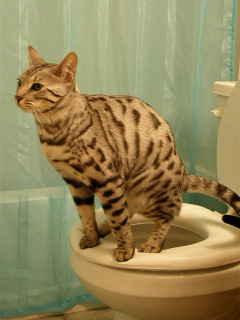Why You Shouldn't Flush Cat Poop Down Your Toilet - Preserve Your Plumbing Health
Why You Shouldn't Flush Cat Poop Down Your Toilet - Preserve Your Plumbing Health
Blog Article
We've encountered this great article involving How to Dispose of Cat Poop and Litter Without Plastic Bags directly below on the web and figured it made perfect sense to relate it with you over here.

Introduction
As pet cat owners, it's important to bear in mind how we throw away our feline good friends' waste. While it might appear convenient to flush feline poop down the toilet, this method can have detrimental effects for both the environment and human wellness.
Alternatives to Flushing
The good news is, there are safer and much more accountable means to throw away cat poop. Consider the complying with options:
1. Scoop and Dispose in Trash
One of the most usual method of getting rid of feline poop is to scoop it right into a biodegradable bag and throw it in the trash. Make sure to utilize a specialized trash inside story and throw away the waste quickly.
2. Usage Biodegradable Litter
Opt for biodegradable cat litter made from materials such as corn or wheat. These litters are environmentally friendly and can be securely taken care of in the trash.
3. Bury in the Yard
If you have a yard, think about hiding cat waste in a designated location far from veggie gardens and water sources. Be sure to dig deep enough to prevent contamination of groundwater.
4. Mount a Pet Waste Disposal System
Purchase a family pet waste disposal system particularly developed for cat waste. These systems use enzymes to break down the waste, reducing smell and ecological influence.
Health and wellness Risks
In addition to environmental problems, purging feline waste can also posture health and wellness dangers to humans. Pet cat feces may contain Toxoplasma gondii, a bloodsucker that can create toxoplasmosis-- a potentially severe ailment, particularly for pregnant women and individuals with damaged body immune systems.
Environmental Impact
Purging pet cat poop presents damaging pathogens and parasites into the water, presenting a significant threat to water communities. These impurities can adversely impact aquatic life and compromise water top quality.
Final thought
Liable family pet ownership prolongs beyond giving food and shelter-- it additionally includes correct waste administration. By refraining from flushing feline poop down the commode and selecting alternative disposal techniques, we can minimize our ecological footprint and shield human health and wellness.
Why Can’t I Flush Cat Poop?
It Spreads a Parasite
Cats are frequently infected with a parasite called toxoplasma gondii. The parasite causes an infection called toxoplasmosis. It is usually harmless to cats. The parasite only uses cat poop as a host for its eggs. Otherwise, the cat’s immune system usually keeps the infection at low enough levels to maintain its own health. But it does not stop the develop of eggs. These eggs are tiny and surprisingly tough. They may survive for a year before they begin to grow. But that’s the problem.
Our wastewater system is not designed to deal with toxoplasmosis eggs. Instead, most eggs will flush from your toilet into sewers and wastewater management plants. After the sewage is treated for many other harmful things in it, it is typically released into local rivers, lakes, or oceans. Here, the toxoplasmosis eggs can find new hosts, including starfish, crabs, otters, and many other wildlife. For many, this is a significant risk to their health. Toxoplasmosis can also end up infecting water sources that are important for agriculture, which means our deer, pigs, and sheep can get infected too.
Is There Risk to Humans?
There can be a risk to human life from flushing cat poop down the toilet. If you do so, the parasites from your cat’s poop can end up in shellfish, game animals, or livestock. If this meat is then served raw or undercooked, the people who eat it can get sick.
In fact, according to the CDC, 40 million people in the United States are infected with toxoplasma gondii. They get it from exposure to infected seafood, or from some kind of cat poop contamination, like drinking from a stream that is contaminated or touching anything that has come into contact with cat poop. That includes just cleaning a cat litter box.
Most people who get infected with these parasites will not develop any symptoms. However, for pregnant women or for those with compromised immune systems, the parasite can cause severe health problems.
How to Handle Cat Poop
The best way to handle cat poop is actually to clean the box more often. The eggs that the parasite sheds will not become active until one to five days after the cat poops. That means that if you clean daily, you’re much less likely to come into direct contact with infectious eggs.
That said, always dispose of cat poop in the garbage and not down the toilet. Wash your hands before and after you clean the litter box, and bring the bag of poop right outside to your garbage bins.
https://trenchlesssolutionsusa.com/why-cant-i-flush-cat-poop/

We had been made aware of that report on Don’t flush cat feces down the toilet through an associate on our other site. Kindly take a moment to share this write-up if you enjoyed it. Thanks a bunch for your time. Visit us again soon.
Schedule Appointment Report this page